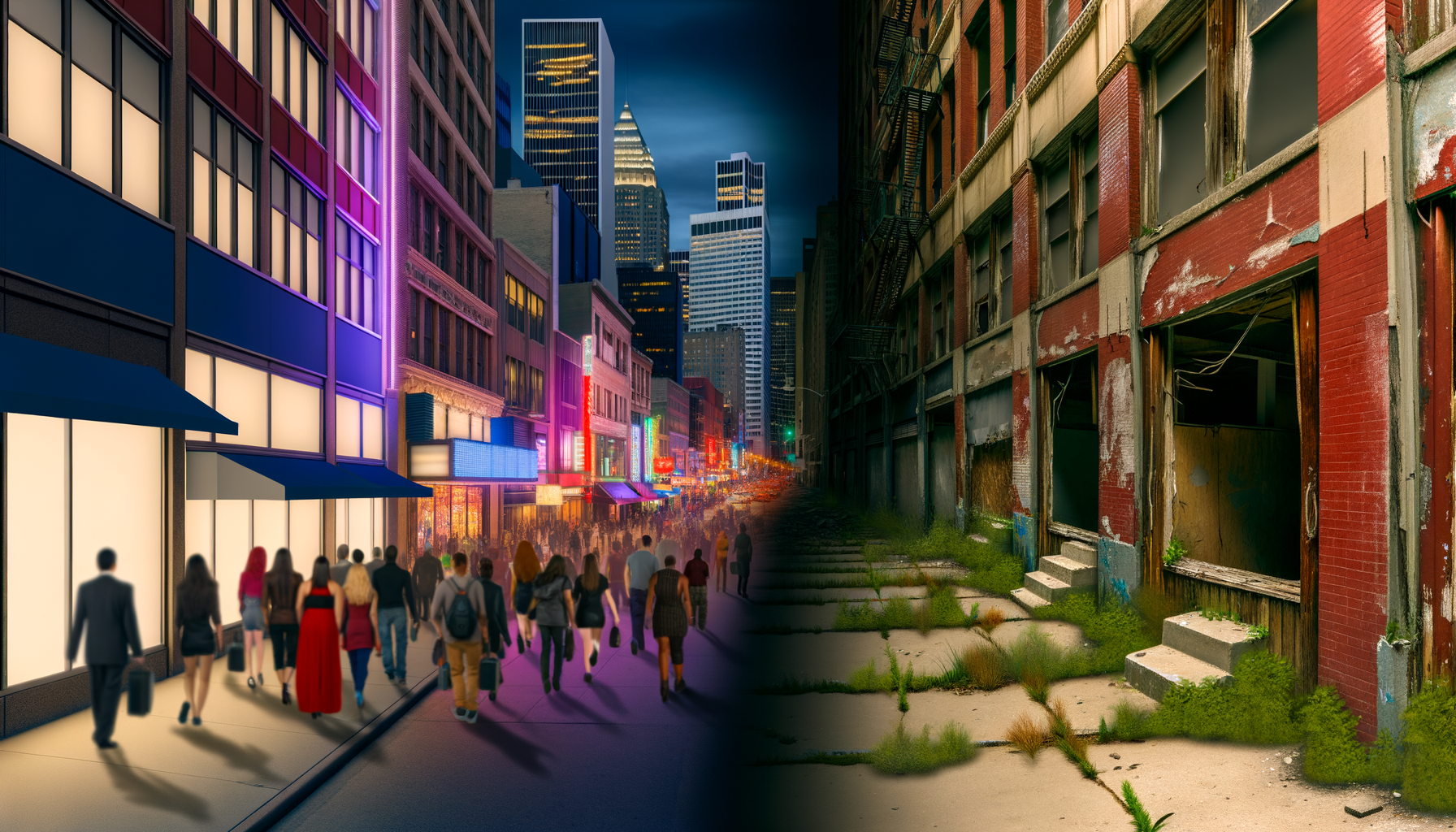Is New York City Facing Decline Like Youngstown, Ohio?
Outsourcing has long been a concern for American workers, especially in areas like Youngstown, Ohio. Once a thriving steel town, Youngstown’s economy was devastated when companies began moving jobs overseas. As we look towards the future, another powerful force is knocking at the door: Artificial Intelligence (AI). Could AI reasoning models have the same devastating impact on jobs in New York City?
The Outsourcing Crisis in Youngstown
In the late 20th century, Youngstown was filled with bustling factories and a strong workforce. But as companies began to outsource jobs, the local economy faltered. Many residents found themselves without work, and the city was forced to adapt to a new reality. In many ways, Youngstown represents a cautionary tale. Outsourcing allowed companies to save money by moving jobs abroad, but it also left a trail of empty storefronts and abandoned homes.
“When jobs went away, so did the community spirit,” says local historian Mark Smith. The decline not only affected the economy but also the sense of unity that had once defined the city.
The Rise of AI: A Double-Edged Sword
Fast forward to today and we find ourselves in the middle of a new wave of technological change: artificial intelligence. AI and machine learning systems are capable of completing tasks that were once thought to require human judgement. From automated customer service to advanced analytics, AI is changing how businesses operate.
But there’s a catch. Just like outsourcing, the rise of AI threatens to displace workers. In New York City, a hub for technology and innovation, the impact could be profound.
What Could AI Mean for NYC Jobs?
The question on everyone’s mind is whether AI will have the same job-eviscerating effect in New York City as outsourcing had in Youngstown. Could this mean a loss of jobs in sectors such as finance, healthcare, and media? Let’s delve further into this.
Jobs at Risk
First, let’s identify which jobs are most vulnerable to AI takeover. According to a report by the McKinsey Global Institute, jobs that involve repetitive tasks are at the highest risk. This includes roles in:
- Data entry
- Basic customer service
- Market analysis
While many of these jobs are important, they often require minimal human reasoning and can be automated. Could this lead to widespread job loss in New York? Let’s consider some examples:
Industry Impact
1. Finance: NYC is known as the financial capital of the world. With AI algorithms now capable of analyzing vast amounts of data quickly, jobs like investment analysis and financial advising may see significant changes. Studies suggest that up to 30% of jobs in finance could be at risk in the coming years.
2. Healthcare: AI is making incredible strides in diagnostics and patient care. While this could improve healthcare outcomes, it might also replace jobs such as radiologists and administrative staff.
3. Media: As content creation becomes more automated, writers and editors may face challenges. AI can generate text based on prompts, making it easier for companies to produce content without human oversight.
The Path Forward: Adaptation and Resilience
With these changes looming, NYC must adopt a proactive approach to safeguard its workforce. Just as Youngstown learned from its mistakes, New York can pave the way for a more resilient economy. What are some potential solutions?
Education and Training
One of the most effective ways to combat job displacement is through enhanced education and training programs. Workers should be prepared for the changes AI will bring. Educational institutions can focus on teaching digital skills, critical thinking, and adaptability.
Promoting Innovation
Investing in new technologies can also create new jobs. By promoting a culture of innovation, NYC can lead the charge in developing AI tools that complement human workers rather than replace them.
As tech entrepreneur Sarah Tan states, “AI isn’t here to take our jobs; it’s here to help us be better at our jobs.”
Fostering a Supportive Community
Lastly, fostering community support is crucial. Local businesses and government can play a role in ensuring that workers affected by AI transitions have access to resources and assistance. This might include job placement services or retraining programs.
Conclusion: A Glimpse into the Future
New York City stands at a crossroads. The impact of AI will undoubtedly change the job landscape, perhaps in ways we cannot yet fully comprehend. However, by learning from past mistakes like those in Youngstown, we can better prepare ourselves for the challenges that lie ahead.
In the end, the rise of AI does not have to mirror the decline of towns like Youngstown. Through education, innovation, and community support, we can create a future where humans and machines work together, leading to a brighter outcome for NYC’s economy.
Let’s embrace the change ahead, challenge the status quo, and build a future we can all thrive in.


